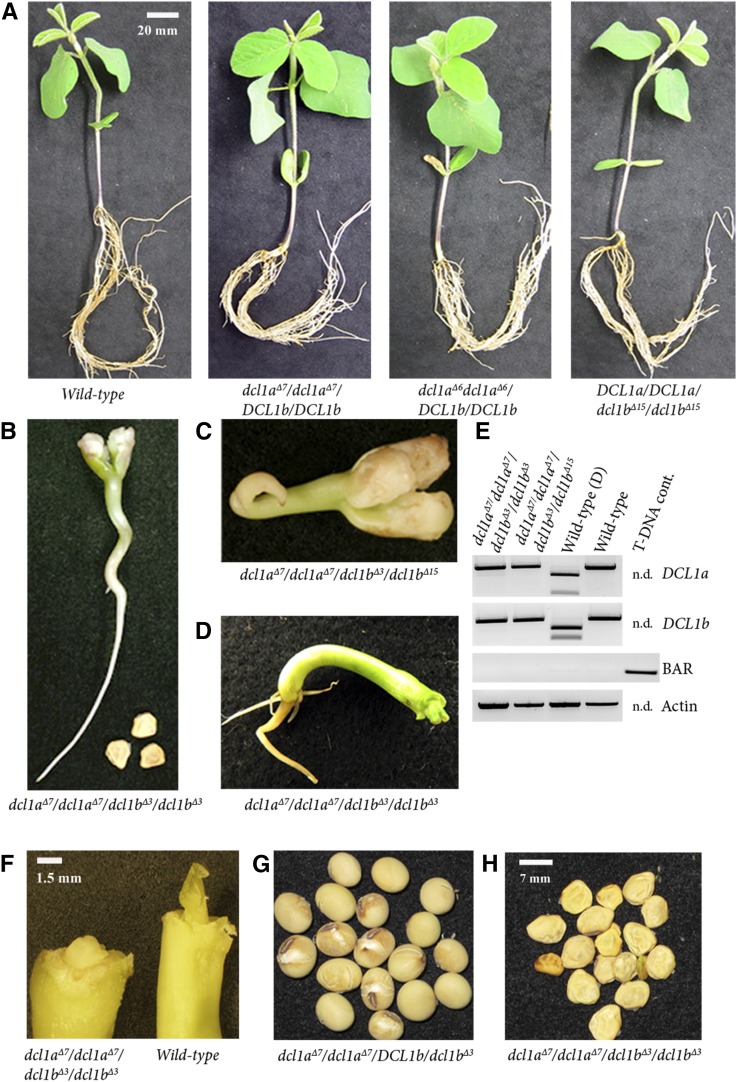Figure 3.
Phenotypic analysis of single and double dcl1 mutants. (A) Fourteen-day-old single homozygous dcl1a or dcl1b mutant plants exhibiting no obvious developmental abnormalities. (B–D) Developmental abnormalities were observed in 14-day-old dcl1a/dcl1b double mutant plants: dcl1aΔ7/dcl1aΔ7/dcl1bΔ3/ dcl1bΔ3 and dcl1aΔ7/dcl1aΔ7/dcl1bΔ3/dcl1bΔ15. A dcl1aΔ7/dcl1aΔ7/dcl1bΔ3/dcl1bΔ3 plant with removed cotyledons revealed an apical meristem that could not differentiate. Heterozygote plants with a wild-type allele of DCL1b had a wild-type appearance. (E) PCR restriction-digestion assays showed that both assessed plants (B–D) are double-mutants (PCR bands are resistant to digestion) and that they are nontransgenic (no band was amplified in the BAR PCR reaction, while a positive control transgenic plant produced the BAR band). (F) Four-day-old dcl1aΔ7/dcl1aΔ7 /dcl1bΔ3/dcl1bΔ3 mutant and wild-type seedlings after removal of the cotyledons to expose the shoot apical meristem (SAM). The mutant SAM could not initiate leaves, presumably due to defective miRNA processing. (G–H) Seed phenotypes displayed by dcl1aΔ7/dcl1aΔ7/DCL1b/dcl1bΔ3 and dcl1aΔ7/dcl1aΔ7/dcl1bΔ3/dcl1bΔ3 plants. Seed from the plant with one wild-type DCL1b allele, dcl1aΔ7/dcl1aΔ7/DCL1b/dcl1bΔ3 genotype, exhibit a wild-type phenotype while seed of the homozygous double-mutant plant, dcl1aΔ7/dcl1aΔ7/dcl1bΔ3/dcl1bΔ3, are shrunken and shriveled and can only germinate under specific induction conditions.

